It’s where the learning is
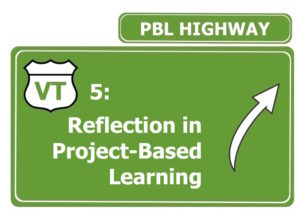 It is easy to not plan time for reflection in project-based learning (PBL) because there is just so much DOING! The students are engaged, and it’s fun and hands-on, and everything moves pretty quickly. But for PBL to connect to learning targets and goals and transferable skills, frequent reflection needs to happen, and as we all know, this has to be deliberately built into the schedule.
It is easy to not plan time for reflection in project-based learning (PBL) because there is just so much DOING! The students are engaged, and it’s fun and hands-on, and everything moves pretty quickly. But for PBL to connect to learning targets and goals and transferable skills, frequent reflection needs to happen, and as we all know, this has to be deliberately built into the schedule.
So, what can this look like? Here are 8 methods for reflection in project-based learning.
Reflection in project and service based learning is often where the big learning happens. Dewey even said, ” We do not learn from experience. We learn from reflecting on experience.”
What are we looking for in a reflection?
Think about having students describe (as inspired by the questions posed on this post at The University of Minnesota):
- WHAT happened
- SO what,
- and NOW what.
Reflection can cover some pretty wide ground.
They can do this in many different ways. This post links the reasons to the Experiential Learning Theory and provides many ideas for how to help students reflect.
1. Exit Tickets
This can be a simple as a notecard where a student quickly responds to a prompt. These are often used as a formative assessment, but can also be used for reflection. The prompt can be content-based, such as drawing an equilateral triangle, to assessing how your group is working at a team (or not). You can also use the exit ticket to have students constantly reflecting back to the driving question. If done regularly, you’ll get to see progress over time.
2. Journals
This old school but very effective tool can be used for a regular reflection activity. Weekly during PBL, students can answer questions such as:
- What have you learned about yourself as a learner this week?
- How can you connect what you are learning to your life?
- And what new questions do you have based on your work this week?
A lot of PBL work is grounded in or draws from a strong STEM background. If this holds true for your PBL project, think about presenting the journal idea as a “lab notebook”: what pieces of data do you want learners to capture, and more importantly, what do you want them to extrapolate from that data?
3. Videos
Students can reflect in the form of a short video that they take themselves on a Chromebook, or with their own devices. You can supply the prompt and students can start talking!

To structure the interview above, the student was asked to answer five questions:
- What’s your project about?
- What has been the most challenging thing about working on this project so far?
- What has been the most satisfying thing about it?
- What advice would you give teachers who want to do this project with their students?
- What advice would you give other students just starting on this project?
When you watch the video, you can see this learner articulate ideas about her learning style as she responds to the prompts. Powerful!
4. Artwork
Reflection is not only the written word. It is easy to get stuck into thinking reflection has to be paragraph and pages of text. The student can do a sketch or other piece of art that reflects their feelings, new learning, and how the group work is going. Collages, sewing (paper circuitry?) or painting all offer opportunities to create a reflection on PBL work.
5. Sketchnoting?
Speaking of art, students can sketchnote their reflections. I personally adore this mode of thinking and reflection (as you can see one of my sketchnotes here). Sketching helps me process and organize new information in a way that writing notes just with words does not.
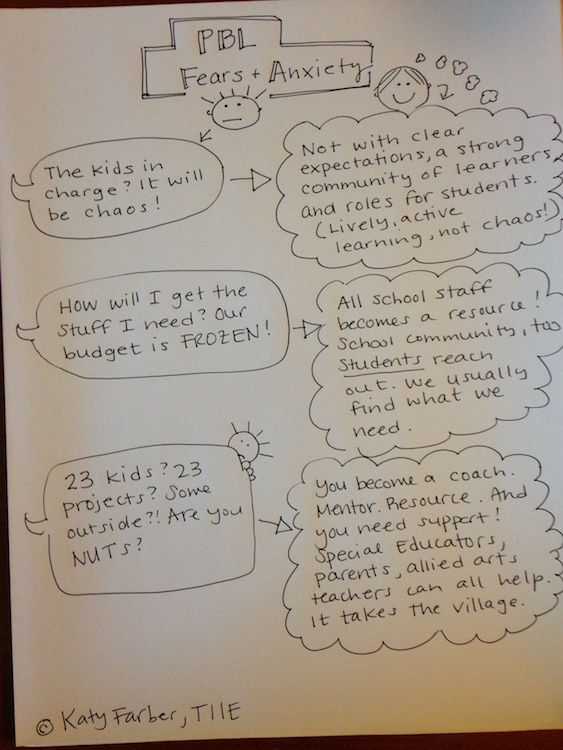
6. Blogging
Students can write blog posts about their weekly PBL work and include videos, pictures, and link to sites and their work. It can be part of their PLPs, can serve as formative instruction, and can communicate about the project with parents. Win-win!
7. Technology tools that show thinking
There are so many great tech tools that can showcase student reflection. Tools like Wordle can turn concepts into interesting shapes, and Thinglink can illustrate a concept with embedded links. Padlet can show brainstormed or linked topics, and students can make mind maps in Coogle or Prezi.
8. Gallery Walks
Once students have some part of their project completed, gallery wants are a great tool. Students set out their work and peers walk by in rounds, placing sticky notes on or near the work, reflecting about what they liked and still wonder.
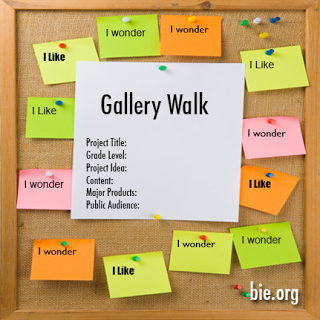
The Buck Institute has a great guide as to exactly how to structure a gallery walk around project-based learning.
How do you help student reflect regularly in project based learning?
What works for you? Or what questions do you have?
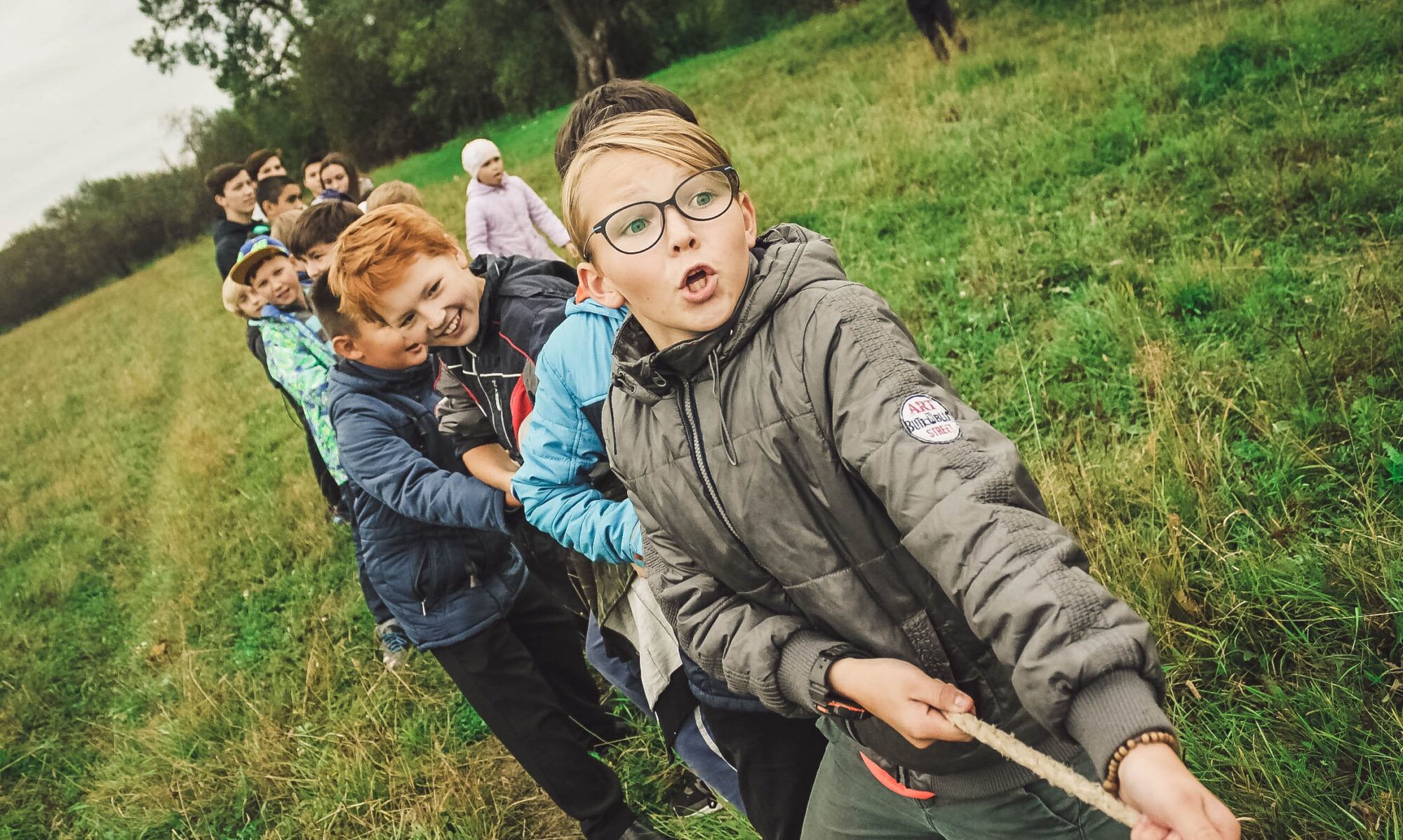

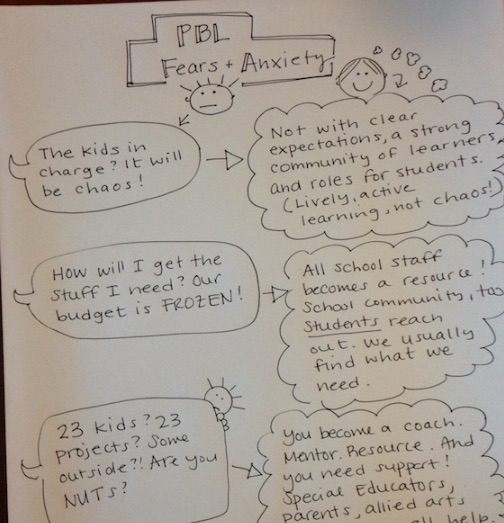
The closing and/or reflection is one of my weaknesses. I chose this to help and have been given several ideas. I like the thought of asking the students, “What has been the most challenging?”